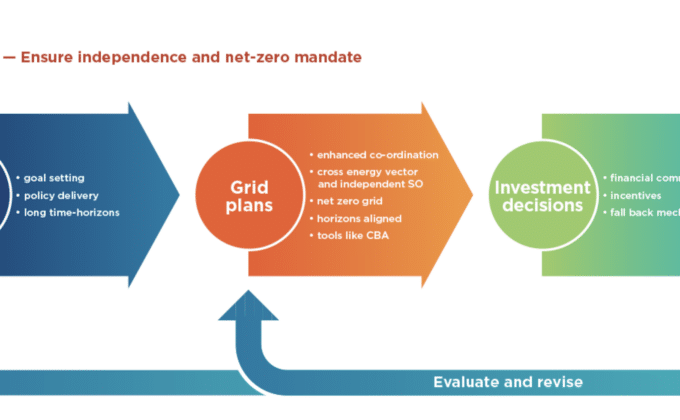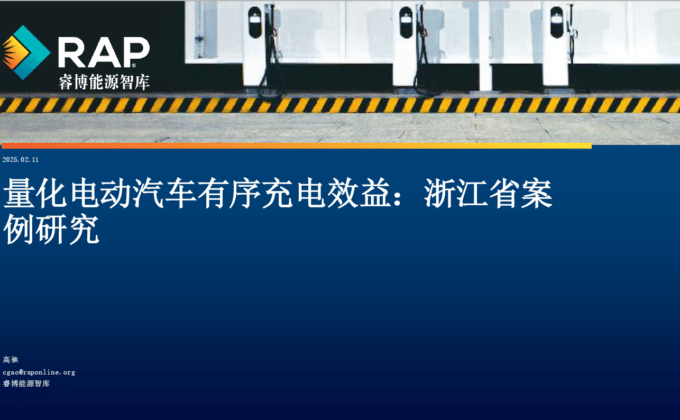
Knowledge Center
We believe that sharing our expertise and collaborations in clean energy policy is how real, effective change happens.
From reports and policy briefs, to webinars and podcasts—RAP advisors have built an extensive collection of resources providing in-depth analysis and practical solutions to today’s energy challenges.
Filter >>
Content Filter:
Europe’s road freight sector is electrifying quickly, with strong projections for the uptake of electric heavy-duty vehicles (e-HDVs) in the coming years. But infrastructure isn’t yet keeping pace. Our infographic highlights the major barriers to freight electrification, including the rollout… View Summary +
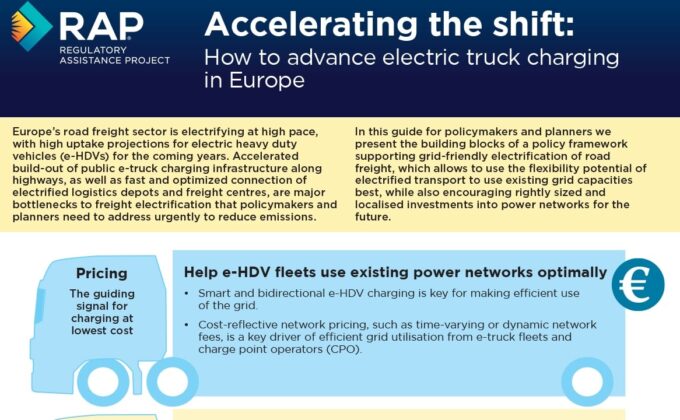
European industry is a very large user of heat: around 1,900 TWh each year for a range of low- to high-temperature processes. Electrification of this process heat has emerged as a key pathway for decarbonisation, resilience and modernisation of industry. View Summary +
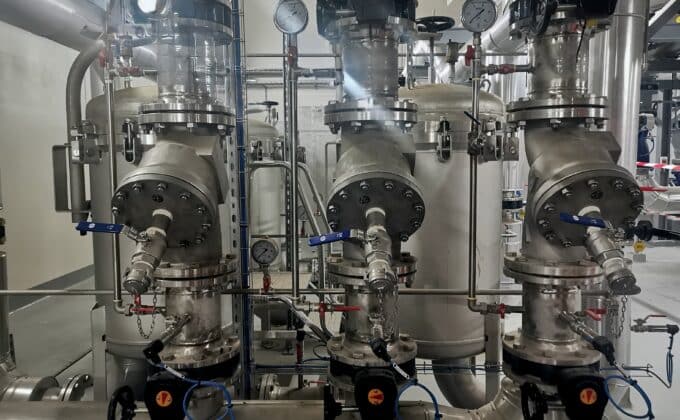
自2020年起,虚拟电厂受到了上到中央政府机构、省级政府,下到市级、区级政府的广泛关注。虚拟电厂作为电力系统的“智能管家”迅速崛起,离不开星罗棋布的分布式资源与电网灵活调度需求的紧密契合。然而,尽管理论上虚拟电厂能够聚集这些分布式资源,但受多重掣肘牵制,难以形成合力,仍有很大一部分基于地方需求的电网服务尚未获得充分重视,这类服务可以成为其重要增收来源。这些地方电网服务的特点是由地市级调度解决地市内部分台区、线路的潮流阻塞、电压跌落等问题,或是对各种电力市场中精确的位置信号作出响应。… View Summary +
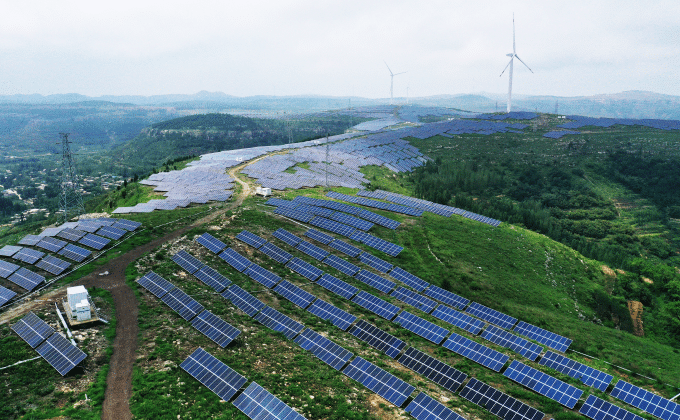
Part of RAP & ICCT’s Benefits of EVs Through Smart Charging Global Project As electric vehicle markets across the globe grow and mature, the challenge to ensure the smooth and effective integration of EVs into the power grid becomes more… View Summary +
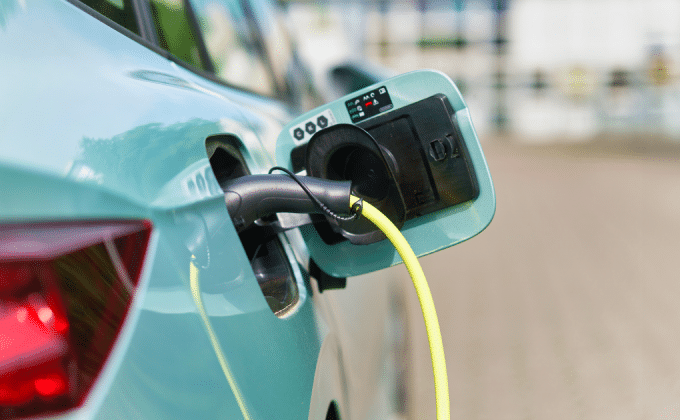
The Regulatory Assistance Project has been bringing clarity to the complexity of the clean energy transition since 1992. By developing data-informed, real-world solutions — that are also cost-effective and reliable — RAP supports the creation of stronger, cleaner and more… View Summary +
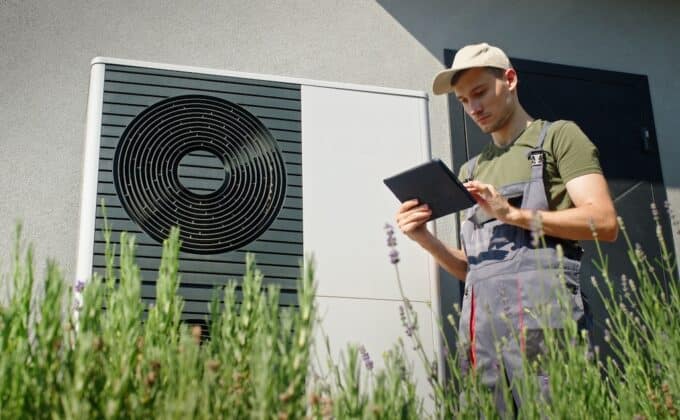
Fluktuierende und dezentrale Energieerzeugung wie auch lokale und flexibler Stromverbrauch verursachen zunehmende Engpässe im deutschen Stromnetz. Diese lokalen Netzsituationen werden nicht im Strommarktdesign berücksichtigt. Eine Berücksichtigung derselben in den Netzentgelten wird diskutiert. Dafür ist es notwendig, die Bewirtschaftungs- und Ausbaukosten… View Summary +

Brazil’s electricity sector is undergoing a pivotal transformation driven by rapid growth in distributed energy resources (DERs), climate commitments and evolving consumer demands. The anticipated expiration of 20 distribution concession contracts between 2025 and 2031 presents a strategic opportunity to… View Summary +

在“双碳”目标的推动下,建筑供暖的电气化比例将显著提升,热泵的部署也将加速增长。热泵不仅能提供高效的供暖方式,还可以通过需求响应机制为电力系统提供灵活调节能力。对供热方而言,这有助于降低热泵运行成本,拓宽供热企业的收入渠道,从而提升热泵的市场竞争力。对供电方而言,这能保障电力系统的安全稳定运行、减轻电网扩容压力,降低供电成本,并促进可再生能源电力消纳。… View Summary +

In der kommende Jahren soll Deutschland seine Abhängigkeit von fossilem Gas stark reduzieren. Damit einher geht zwangsläufig ein schrittweiser Rückbau der Gasnetze, da sich diese ohne signifikante Belastungen der Verbraucher nicht mehr wirtschaftlich betreiben lassen. In einer Studie hat… View Summary +
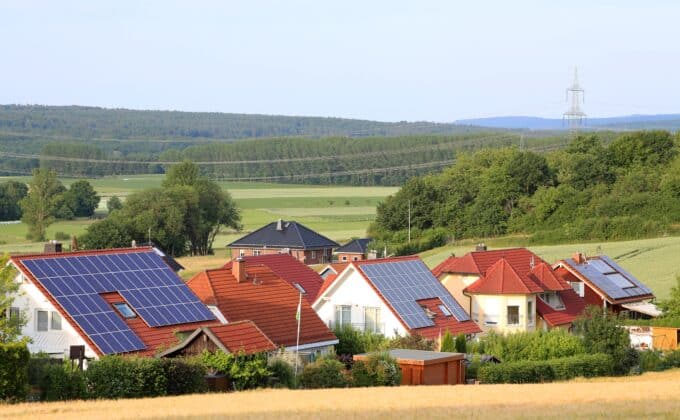
Part of RAP and ICCT’s Benefits of EVs Through Smart Charging Global Project Smart charging optimizes electrical vehicle charging by adjusting timing and power based on price signals reflecting for example when grid capacity can be used or when renewable… View Summary +
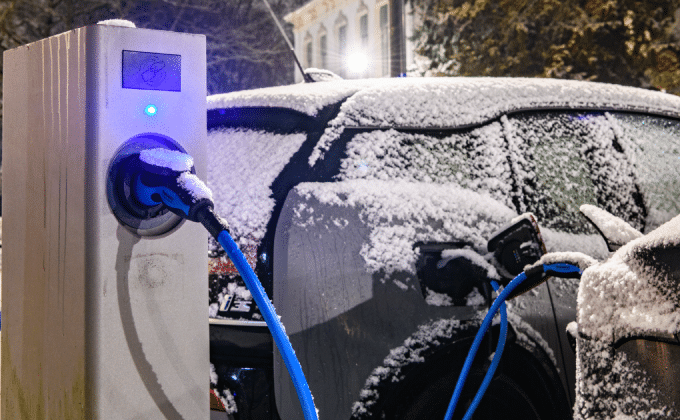
This executive summary is part of a global project by the Regulatory Assistance Project (RAP) studying the economic and environmental benefits of deploying smart electric vehicle (EV) charging in specific geographies. The study identifies those benefits as avoided system costs… View Summary +
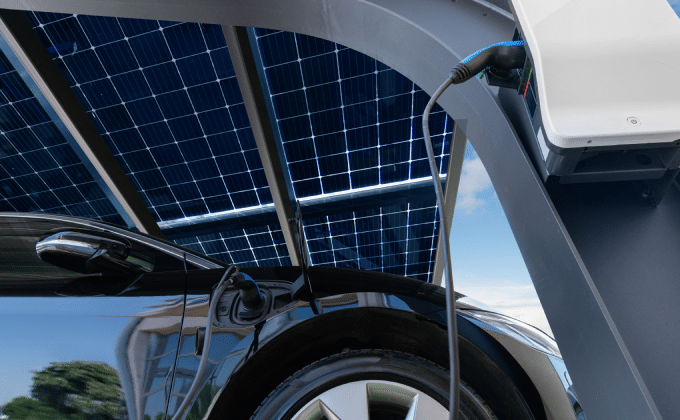
This document presents the modeling results from the China section of RAP’s global project, Quantifying the Benefits of Electric Vehicle Managed Charging. Our key findings include: From the perspective of the grid dispatch center: Managed charging of electric vehicles provides… View Summary +
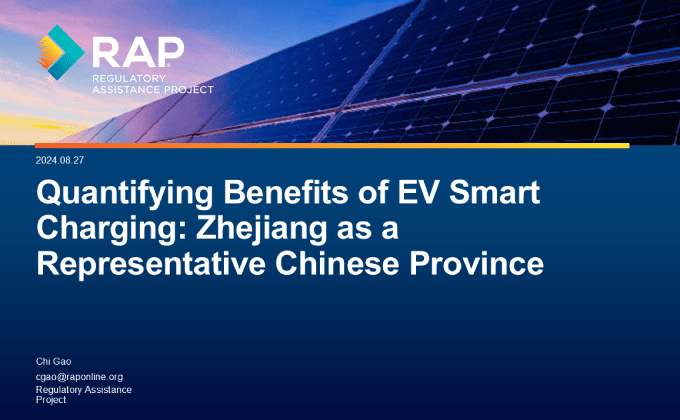
电动汽车灵活性是近年来能源领域关注的热点之一。随着电动汽车数量的迅速增长,其充电负荷对电网运行造成了新的挑战,也提供了新的机遇。通过分时电价等经济激励手段,电动汽车的充电灵活性已经初步显现,尤其是在工商业用户侧,相关实践和试点项目取得了长足进展。然而,在居民侧,虽然电动汽车充电负荷规模庞大且潜力巨大,但其灵活性的挖掘和利用仍处于初级阶段,存在很大的提升空间。 … View Summary +
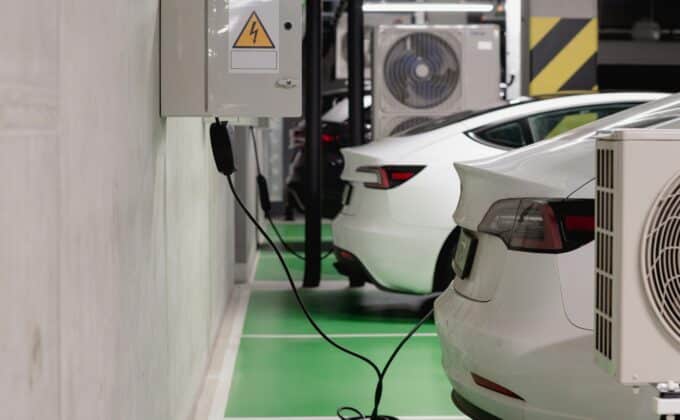
The term anticipatory investment has been coined on a recognition that we need to build electricity grids at a quicker pace, in greater volume, and with view of a longer time-horizon than before in order that grids do not present… View Summary +
